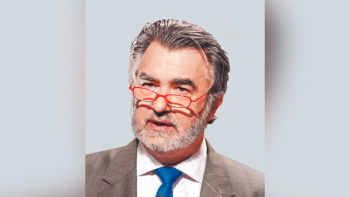
- Applied Clinical Trials-03-01-2021
- Volume 30
- Issue 3
HTA—Easier to Reach Global Consensus Than an Agreement in Europe
After three years, member states of the EU have yet to make any real progress on legislation that would coordinate their clinical assessments more closely.
The pressure is on for decisions over health technology assessment in Europe. After three years, the 27 member states of the European Union have still made no real progress on legislation that would coordinate their clinical assessments more closely, and meanwhile the two-decade-long trial of EU-funded voluntary cooperation among health technology bodies across Europe is on the brink of running out of time to demonstrate technical fixes to the duplication that some 80 independent national and regional HTA agencies are currently responsible for.
There is no timetable for member states to agree on the European Commission's 2018 proposal for working more closely together, and the arguments between them over whether it should be obligatory are still paralyzing progress. Eventually, if no compromise is reached, the draft law may just wither and die. And if the compromise reached does not satisfy the Commission as sufficiently robust in reducing duplication, the Commission may just kill the proposal off itself.
As for EUnetHTA, running on borrowed time since last year (it was due to finish its work in 2020, and the Commission extended its mandate and funding for one last year in the hope of progress), it still has a lot of work to complete. A cursory glance at its own programming demonstrates just how much.
One of EUnetHTA's objectives is to support the implementation of a HTA cooperation mechanism, and so far, there is no mechanism to support. It is also supposed to promote re-use of jointly-produced HTA reports—which is just what member states are currently squabbling over. Another is to "refine the production processes of joint assessment reports" and "facilitate the implementation of the joint assessment in national and regional practice." And yet another is to provide input on final processes and recommendations for a sustainable model of European collaboration on joint assessments after 2020—precisely what is not yet agreed by member states. Other aims are to provide manuals and methodological guidelines and fee structures and data requirements for the new system—which doesn't yet exist and doesn't look like it is going to anytime soon.
The recorded achievements of EUNetHTA consist mainly of winning approval for reports on some of the challenges encountered in tackling these issues or issuing recommendations for a system that has yet to be agreed on, much less built, or organizing meetings among "stakeholders"—many of whom appear unwilling to make any progress.
At least one positive step has however been made towards a common approach on HTA—a definition of HTA itself has been agreed. But this step has been taken at global rather than European level, with EUnetHTA just one of the participants. An international task force of the major HTA organizations has reached consensus after a three-year consultation. The definition is short but represents a lot of long discussion.
"HTA is a multidisciplinary process," it says, "that uses explicit methods to determine the value of a health technology at different points in its lifecycle. The purpose is to inform decision-making in order to promote an equitable, efficient, and high-quality health system." It is accompanied by four short notes, one of which defines terms: "A health technology is an intervention developed to prevent, diagnose or treat medical conditions; promote health; provide rehabilitation; or organize healthcare delivery. The intervention can be a test, device, medicine, vaccine, procedure, program, or system." Another describes the process: "The process is formal, systematic, and transparent, and uses state-of-the-art methods to consider the best available evidence." Another considers methodologies: "The dimensions of value for a health technology may be assessed by examining the intended and unintended consequences of using a health technology compared to existing alternatives." These dimensions, it adds, "often include clinical effectiveness, safety, costs and economic implications, ethical, social, cultural and legal issues, organizational and environmental aspects, as well as wider implications for the patient, relatives, caregivers, and the population. "The overall value may vary depending on the perspective taken, the stakeholders involved, and the decision context." A fourth note makes clear that HTA "can be applied at different points in the lifecycle of a health technology, that is, pre-market, during market approval, post-market, through to the disinvestment of a health technology."
The process involved wide consultation with the broad HTA community. It was co-led by the International Network of Agencies for Health Technology Assessment and Health Technology Assessment International, with active participation from the regional HTA networks in Asia (HTAsiaLink) and the Americas (RedETSA), along with EUnetHTA. The International Society for Pharmacoeconomics and Outcomes Research and the World Health Organization took part as observers, and the final version has also been approved by the EuroScan International Network. For all the discussions of HTA over the last half-century, and all the guidelines and procedural manuals developed at national and regional level, there has not been a global consensus on the definition until now. For the instigators of this initiative, the success is a "historic achievement" that reflects "the maturity of the international HTA community to come together for a common purpose."
Tell that to the guys in the EU…
Peter O'Donnell is a freelance journalist who specializes in European health affairs and is based in Brussels, Belgium
Articles in this issue
almost 5 years ago
Clinical Trials and Trustalmost 5 years ago
Accelerating Clinical Trial Design and Operationsalmost 5 years ago
Taking eClinical to the Next Levelalmost 5 years ago
ePRO and Ensuring Data Integrityalmost 5 years ago
Plan the Flow of Data Early for Maximum Effectalmost 5 years ago
Applied Clinical Trials March 2021 Issue (PDF)almost 5 years ago
A Bevy of COVID-Tested Successesalmost 5 years ago
The Road to True Data Harmonizationalmost 5 years ago
COVID-19 Vaccine Makers Overcome Challenges to Ramp Up ProductionNewsletter
Stay current in clinical research with Applied Clinical Trials, providing expert insights, regulatory updates, and practical strategies for successful clinical trial design and execution.




